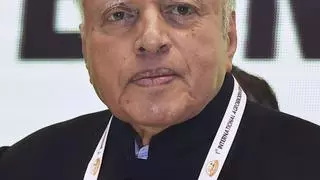When Norman Borlaug, one of the world scientists who contributed to higher foodgrain production, received the Nobel Peace Prize in 1970 for his work on agriculture in India, he dedicated it to MS Swaminathan.
In a letter to the architect of Indian green revolution – who passed away in Chennai on Thursday owing to age-related illness, Borlaug wrote: “To you, Dr Swaminathan a great deal of credit must go for recognising the value of Mexican dwarfs (wheat seedlings). Had this not occurred, it is quite possible that there would not have been a green revolution in Asia.”
Termed as “Father of Green Revolution”, Swaminathan turned India into a self-sufficient nation in foodgrain production from being an importer.
Man Friday
Until 1964, it depended on the US wheat aid under Public Law (PL) 480 agreement. Some critics said the wheat sent to India by the US was “fit enough only for pigs!”. C Subramaniam, who became the food and agriculture minister after India turned down US foodgrain aid, bet big on science and technology.
And the Man Friday for him was MS Swaminathan! In a tribute on his 90th birthday, the then World Food Prize Foundation President Kenneth M Quinn said: “No other person was as directly involved in bringing both the Green Revolution to India and then spreading it throughout South-East Asia as Dr Swaminathan.”
Also read
Deservingly, Swaminathan was the First World Food Prize winner in 1987 and Borlaug, who the world food prize laureate met in 1953, was the one who instituted the award.
Impact on poor farmer
Swaminathan, in association with Borlaug, was instrumental in spreading high-yielding wheat and rice varieties in India, helping India to take up the challenge thrown by the rejection of US food aid.
They improved agricultural practices among poorest farmers in the country that demonstrated “courage and risk-taking in challenging” the political establishment then.
Quinn records that Swaminathan recognised the effectiveness of Borlaug’s new dwarf wheat varieties and asked for help to counter India’s looming famine. Borlaug travelled with the laureate for three weeks in North India’s wheat belt. That was the beginning of India’s Green Revolution with wheat leading the way.
The man who led the Green Revolution insisted that the demonstration of the new varieties be held on the fields of poor farmers. His reasoning: “When a poor farmer produces more, it has a tremendous impact”.
‘Scientist of rare distinction’
When Swaminathan was conferred with the World Food Prize, Javier Perez de Cuellar, then UN Secretary-General, said: “(He) is a living legend. His contributions to agricultural science have made an indelible mark on food production in India and elsewhere in the developing world. By any standards, he will go into the annals of history as a world scientist of rare distinction.”
The architect of the Indian green revolution played another important role in the lives of farmers when he headed a committee that recommended that the minimum support price for farmers should be 50 per cent of weighted average cost of production.
It was submitted in 2006 but took another 8 years to be implemented. The way his formula has been implemented is still controversial, though.
The renowned scientist worked tirelessly at least a month before his death. Apart from other responsibilities, Swaminathan served as the Chairman of the Government’s National Commission on Farmers, President of the Pugwash Conferences on Science and World Affairs, Chairman of the High-Level Panel of Experts (HLPE) of the World Committee on Food Security (CFS). He was also a member of the Rajya Sabha.
Grounded in humbleness
The Father of Green Revolution was most sought after wherever he went, but whoever came across him praised his humbleness.
“I’ve met him several times. And have come away each time with a deeper respect for him. I’ve known him to be one of the most humble scientists with no airs about him,” is the general comment on the architect of the green revolution.
Swaminathan, who would have turned hundred on August 7, 2025, is a product of the Coimbatore Agricultural College, now Tamil Nadu Agricultural University, and went on to become a research associate at the University of Wisconsin. As a research associate, he developed the “Alaska Frostless” potato.
After joining the Indian Agricultural Research Institute in 1954, he became a rice and wheat geneticist. He also served as the Director-General of Indian Council of Agricultural Research during 1972-1979.
A testimony to the fact that Swaminathan is respected abroad is one of the largest artistic depictions of any citizen of India in the US in Des Moines, Iowa. Standing over 10‐feet in height, the work of art of the renowned agri scientist is a colorful mural comprising over 250,000 individual pieces of glass.
As the world of agriculture grieves the loss of the “Akashya Patram” (inexhaustible vessel), there is a section which feels that Swaminathan deserves a Bharat Ratna.













Comments
Comments have to be in English, and in full sentences. They cannot be abusive or personal. Please abide by our community guidelines for posting your comments.
We have migrated to a new commenting platform. If you are already a registered user of TheHindu Businessline and logged in, you may continue to engage with our articles. If you do not have an account please register and login to post comments. Users can access their older comments by logging into their accounts on Vuukle.